Deaths in the channels. The black effect of 'green' energy
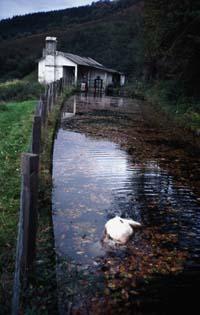
First of all, it is important to explain how this electric generation system is. Hydroelectric energy is generated from the kinetic and potential energy of water by descending from top to bottom. To do this, a dam is made in the river or river and, through the channels, the water is diverted in a small slope to drive it to the power plant. Once at the top of the central, the water circulating through the channel is inserted into a tube and lowered into a precipitate to move the turbine. This turbine moves alternators that generate electricity.
Water transport channels are usually long and usually not covered. Therefore, they create a barrier effect for people and animals who want to move around. Birds do not usually have large passing problems, but the case of mammals, reptiles or amphibians is completely different. Some who want to cross the channel enter or jump into the water, but then they can't get out, since the wall of the channel is vertical and too high.

Mortality, how much?
Previously it was known that sometimes some animals drowned, but it was necessary to know the extent of the problem. To do this, as far in advance as possible, we organized a group of friends who traveled the channels and controlled what we found drowned in them. We have done this for five years in an area of northern Navarre with numerous central and canals, in the upper basin of the Urumea and Leitzaran rivers, and the data collected have revealed that the problem is worrying. There are channels that do not generate serious problems, but others do.
To begin with, we were able to confirm that it falls from the bed: amphibians, reptiles, birds, mammals and invertebrates. Fish also often enter the channel and then can't leave, but as long as the canal is not empty, they usually survive. Despite the few accidents that have occurred (and better, of course), these infrastructures can pose a risk to people.
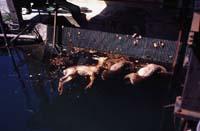
The data collected were surprising. In those five years, adding all the water courses, 1,505 vertebrates were drowned: 216 sheep (and lamb), 3 mares, 6 pigs, 58 roe deer, 29 hawks, 871 micromammals (especially mice and moles) and a long etcetera. In the years 2002-2006, in the two channels of Zumarraga, the average age of drowning was 49 sheep per year, while in those of Ugatz, 4 per year. As expected, long and wide channels have higher mortality than small ones. The cutlery, for its part, does not produce death, at least in the covered sections.
What can be done to reduce these deaths?
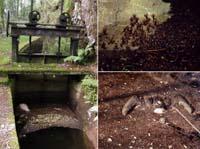
In a few months, after checking the severity of the problem, we started thinking about solutions. We soon saw that there were a lot of possibilities to reduce deaths and that, according to them, different consequences would be obtained. Undoubtedly, the most effective option not to kill animals is to undo the dam and the canal and leave the river as it was. This is an ecologically optimal option, but difficult to meet the current employment and electricity needs of our society. But without interrupting this activity there are other solutions. In addition, these solutions can also serve for watercourses that are used for other purposes, since it is not the only activity that builds hydroelectric power plants.
Data on faunal mortality in irrigation channels can be found in the literature. Members of the Vertebrate Conservation Association assured the death of vertebrates of all species in the Dehesas area of Extremadura, but consider this infrastructure especially lethal for amphibians and reptiles. Also, in 2005 it was observed that in the Canal de Navarra that is being built to water the Ribera from the reservoir of Itoiz, many animals fell and among them a lot of wild boars. Images of bleeding boars and hunters who took them out of the water appeared in many media outlets to get out of the bed. It is evident that in the channels discovered that are used for irrigation also fall the animals and that to leave them circulate bad would eat. Therefore, solutions to reduce faunal mortality in all types of channels can be:

All the channels studied around the hydroelectric plants of northern Navarre have bridges or some type of crossing bridge. However, many are inadequate (due to their too small size or incorrect location) or are not properly cared for. Surprisingly, many of the steps are closed with barriers and wire, so animals should look for alternatives to channel passage and easily fall into the water.
However, animals learn to cross the riverbed by well-constructed steps. Tracking snow footprints shows that animals learn perfectly where they are and use the right steps. That is, a series of steps ordered in suitable places would reduce mortality. The wide steps established at a minimum distance of 400 meters (over 5 meters) and those that do not have fencing on the flanks can be, in general, the most suitable for animals.
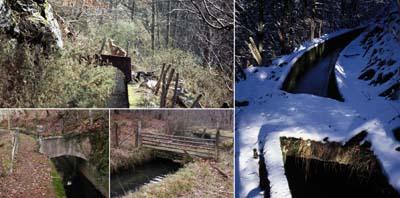
The walls of the riverbanks are quite upright or vertical, so most fallen animals cannot go outside. However, depending on the species, the lizards leave without problems, but a sheep can not, once in the water, climb a vertical step of a meter and a half.
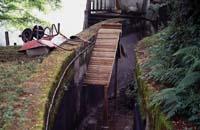
The closure of both riverbed margins prevents the fall of animals in the water, favoring access to steps and significantly reducing mortality and barrier effect. The best option can be given by wire mesh closures, which, considering that corzos give very large jumps, would need a height of two meters. However, these enclosures require fine care and maintenance, as over time they become lax, pierce and fall. Once the barrier has deteriorated, the animals begin to cross the wrong places, endangering the fall to the water. Therefore, for this measure to be effective it is necessary to keep the channel well closed and, of course, to establish the appropriate steps.
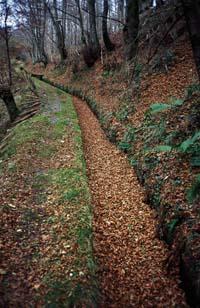
Current status of tracks to be followed
Apparently, the administration and hydroelectric companies were informed of this problem and, in general, the willingness to solve the problem was shown. However, before it comes to advancing for good will, everything has gone very slow, while many animals have been killed. However, it has been achieved that some water courses take measures to reduce the deaths of fauna and prevent the death of some animals. Among other things, in 2006 one of the canals of Zumarraga, which killed a lot of fauna, began to close with wire and escapes for animals were installed in the channels of Rezola. In the coming years we will be able to see the usefulness of the measures being taken, but in any case we will have to continue investigating and taking better measures to make this problem less and less.
Today, electricity is critical, but if you want to be green, hydropower will have to improve it substantially. At the time of its construction, the channels were excellent works of technology and engineering, but as the problems that generate are becoming known, it has become evident that nowadays they need adaptations. XXI. Energies of the 21st century. It needs 20th century technology and is one of the channels cited 80-90 years ago. With some will, it is possible to make this problem much less and improve the quality of life of the fauna and inhabitants of here. And, as with waterways associated with hydroelectric power plants, the above measures are valid for new waterways being built for irrigation and other uses. Therefore, it is only necessary to implement measures to reduce mortality.
Thanks to people who have collaborated in data collection and channel staff. Also to Nekane Agirre and Miren Elosegi for their collaboration in computer science.
Buletina
Bidali zure helbide elektronikoa eta jaso asteroko buletina zure sarrera-ontzian











